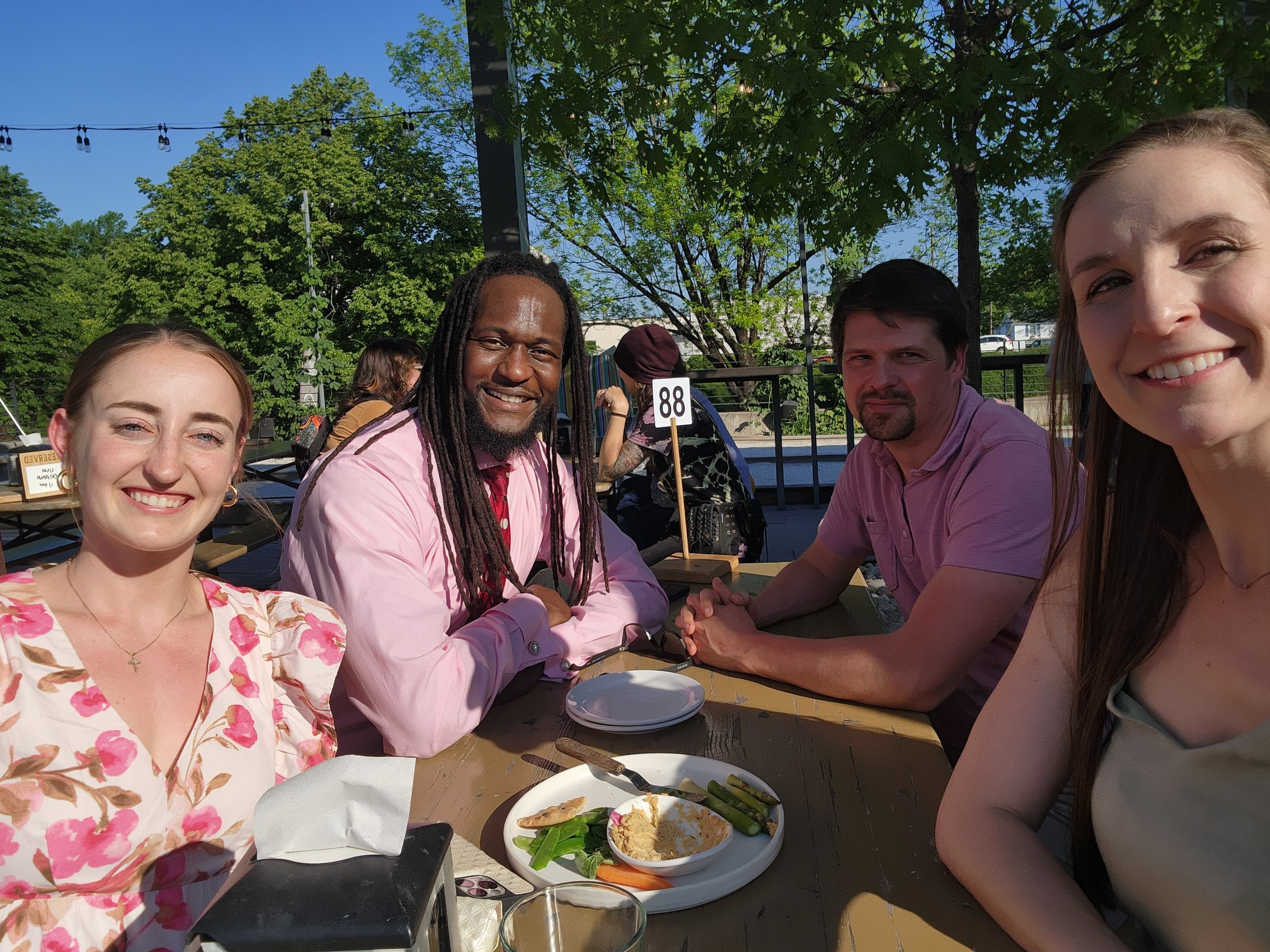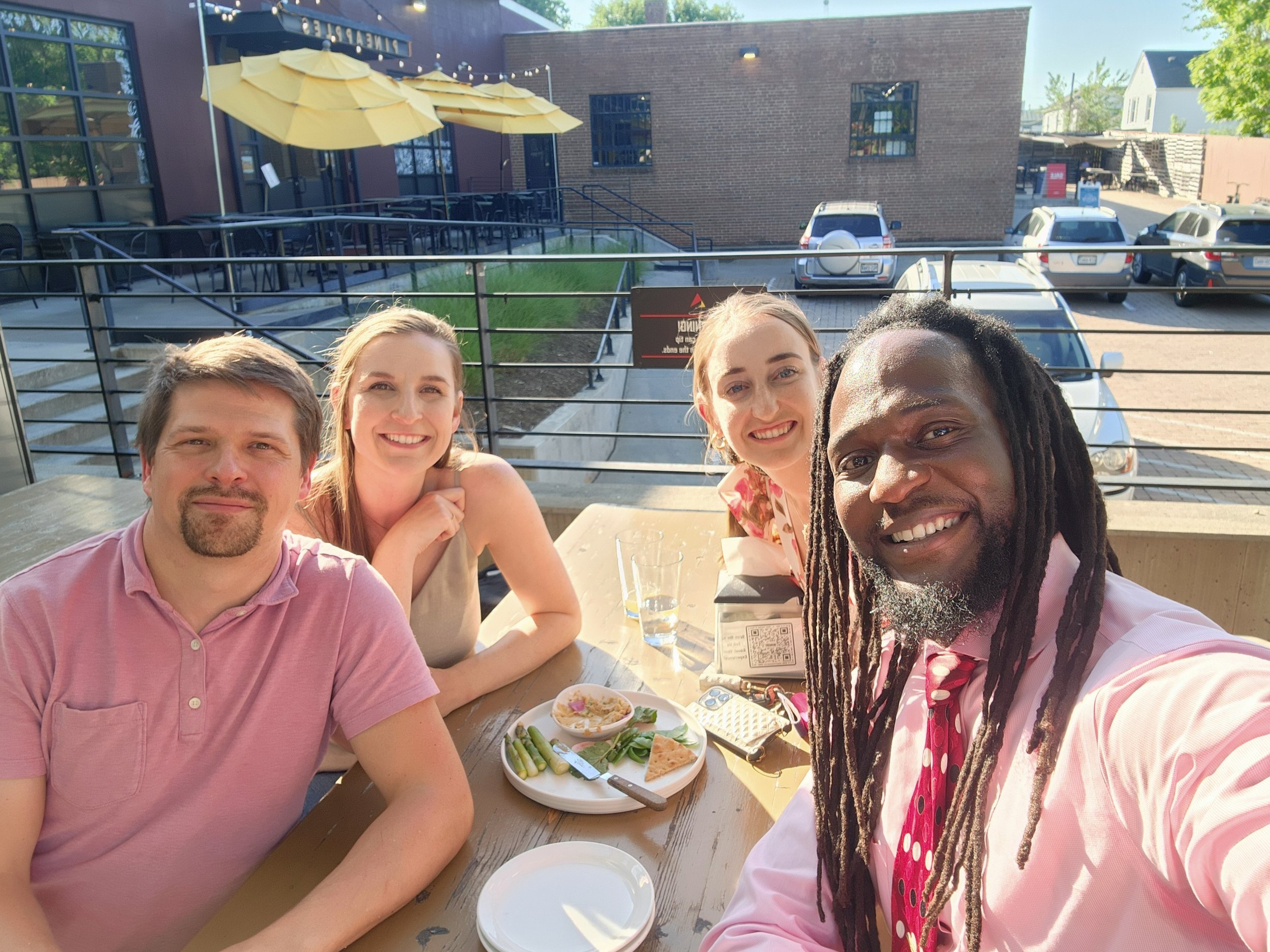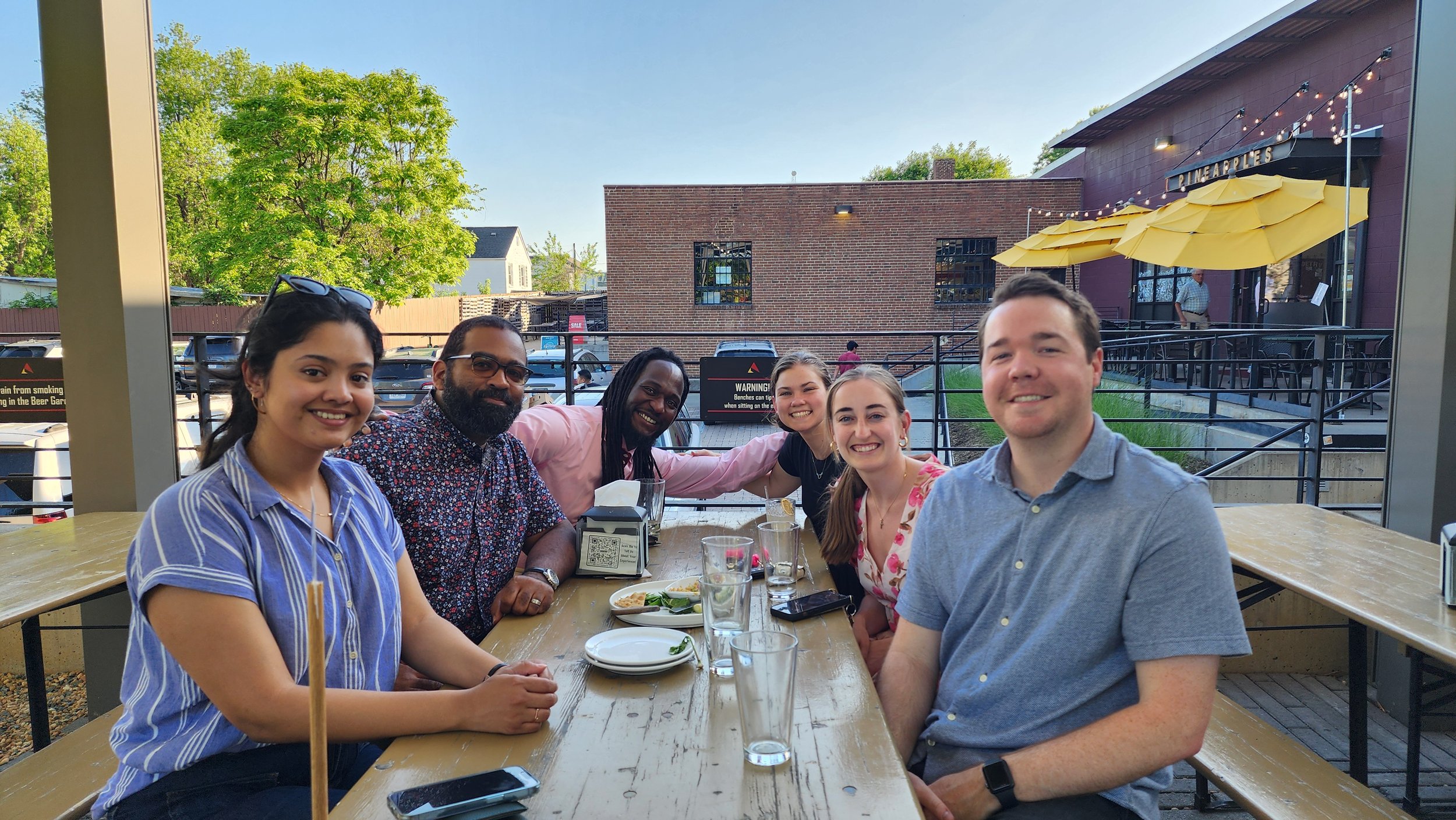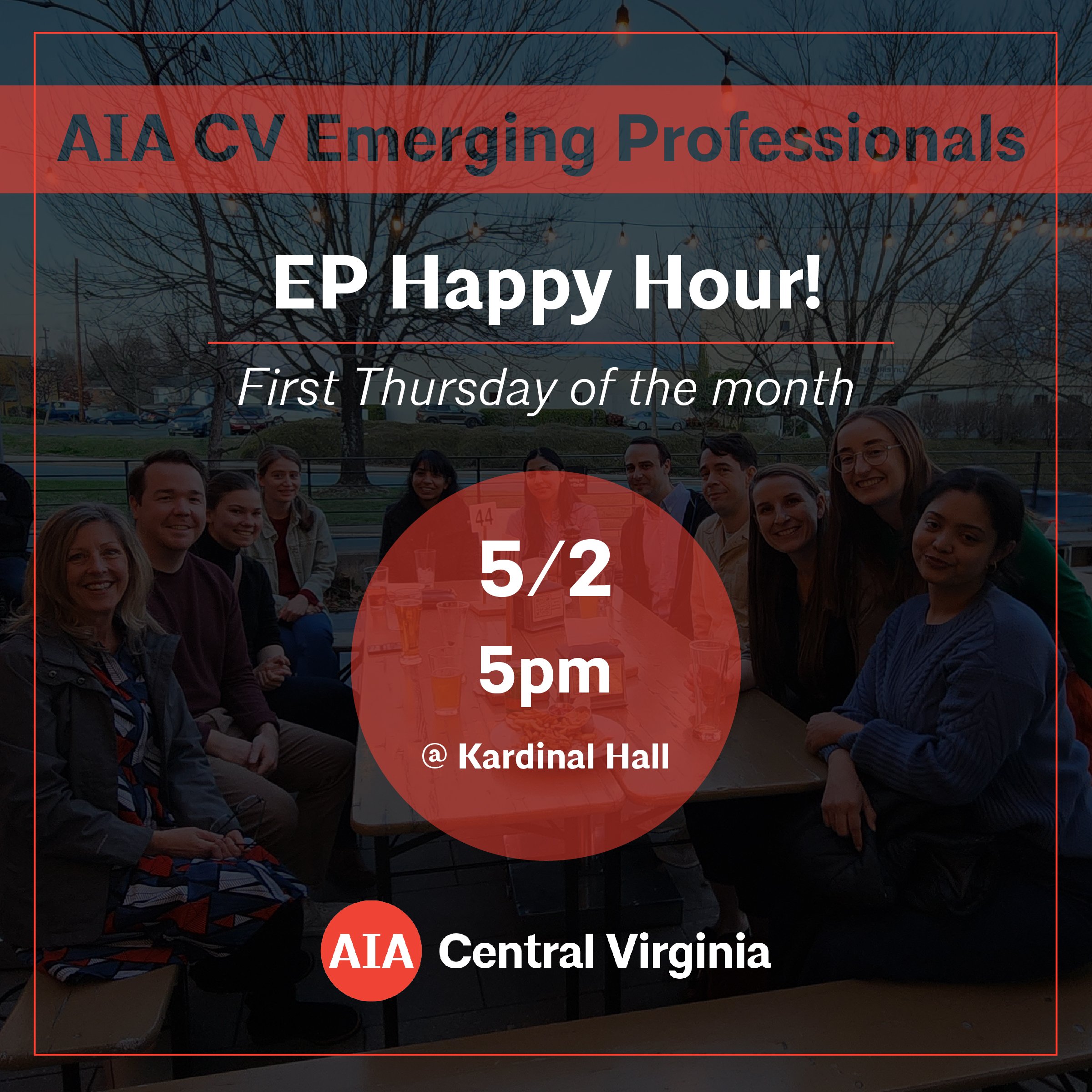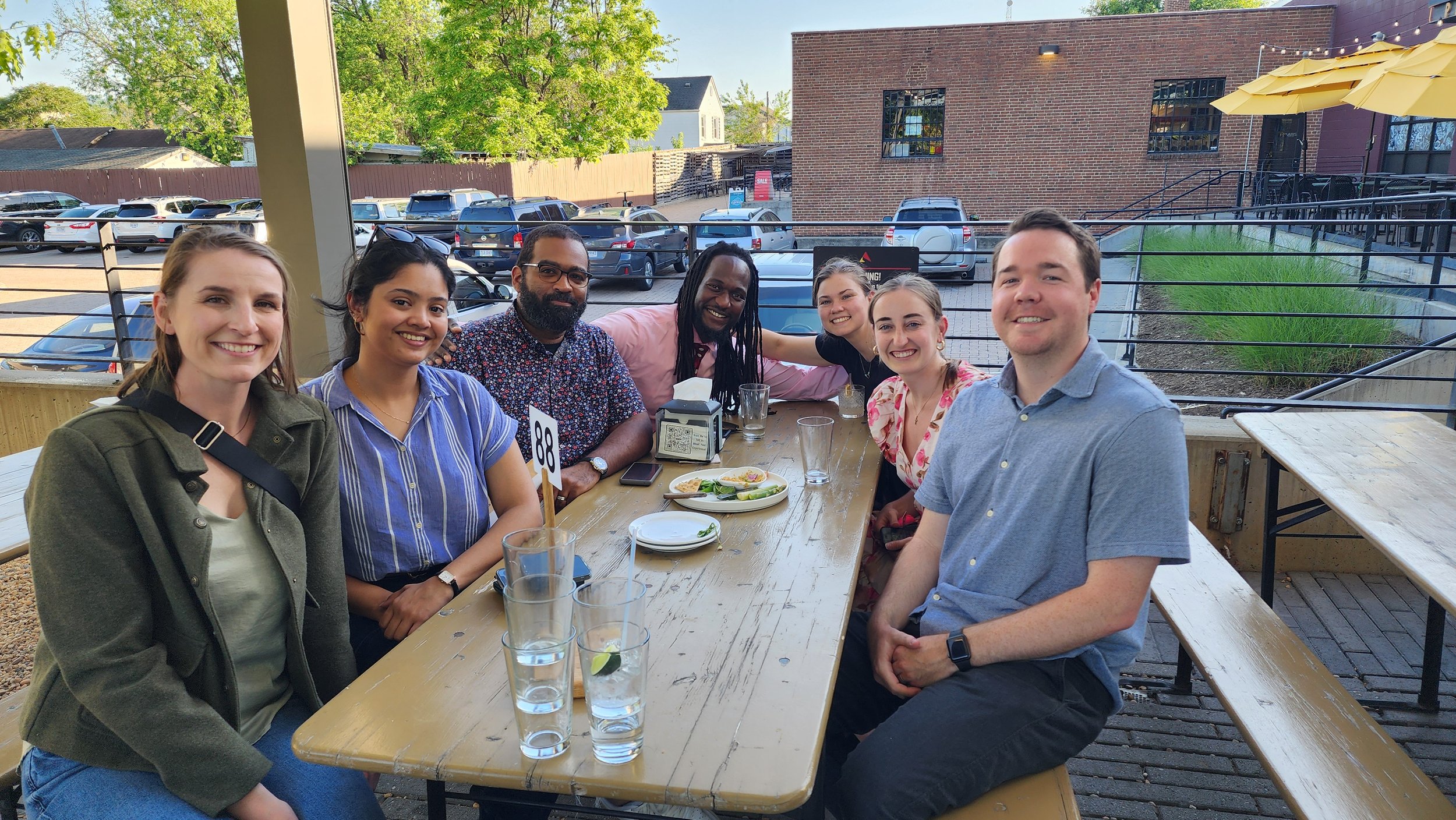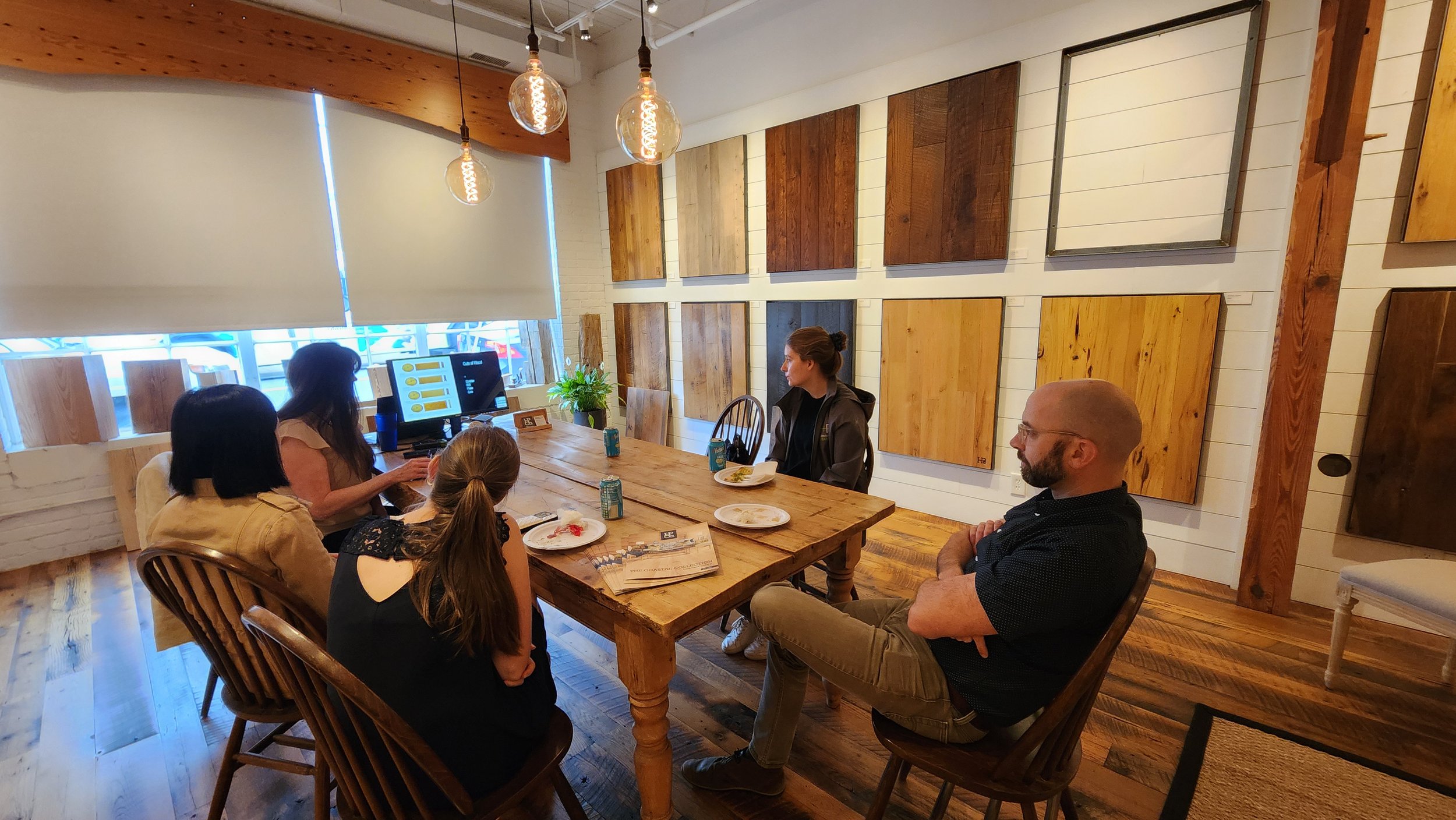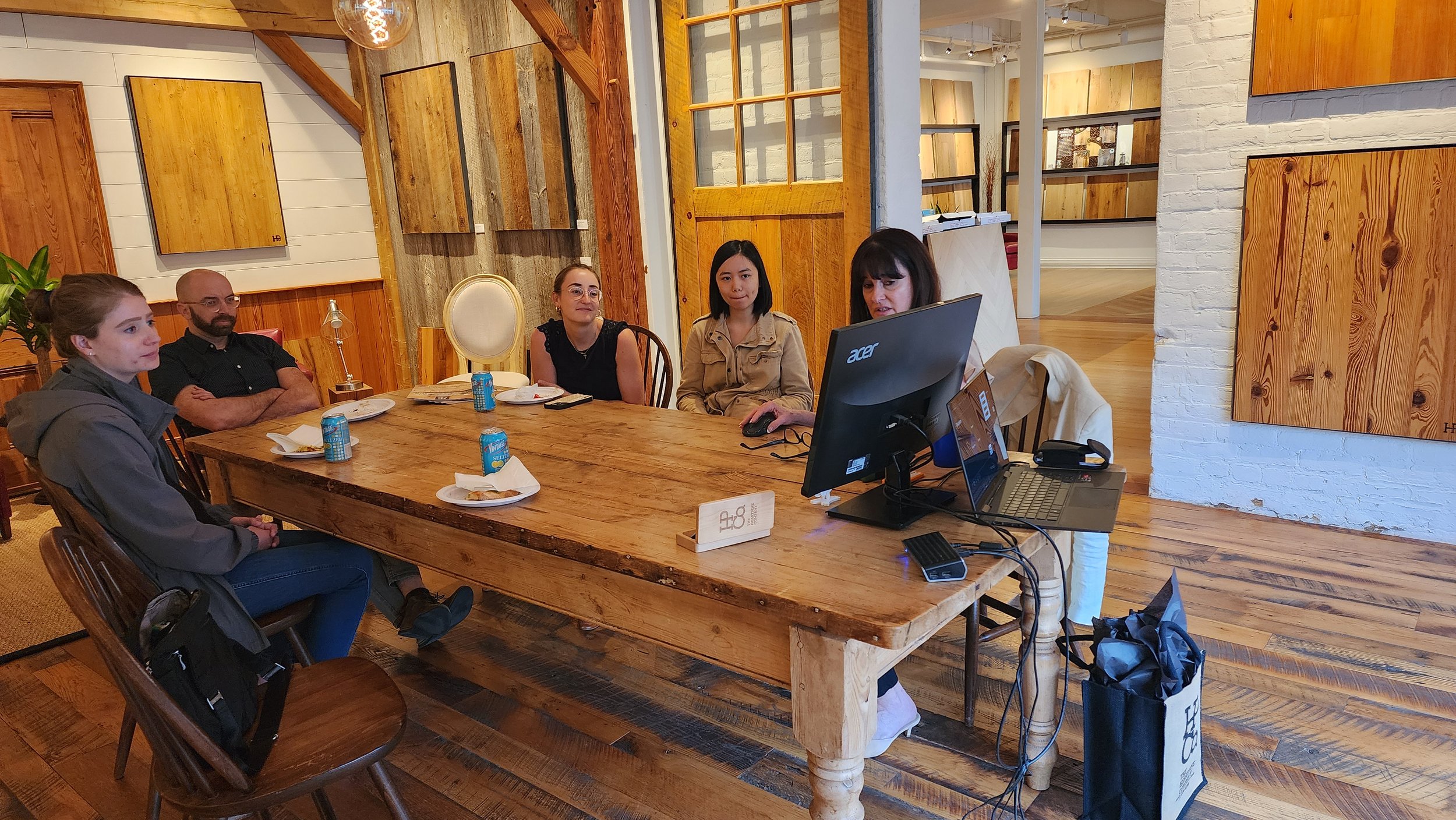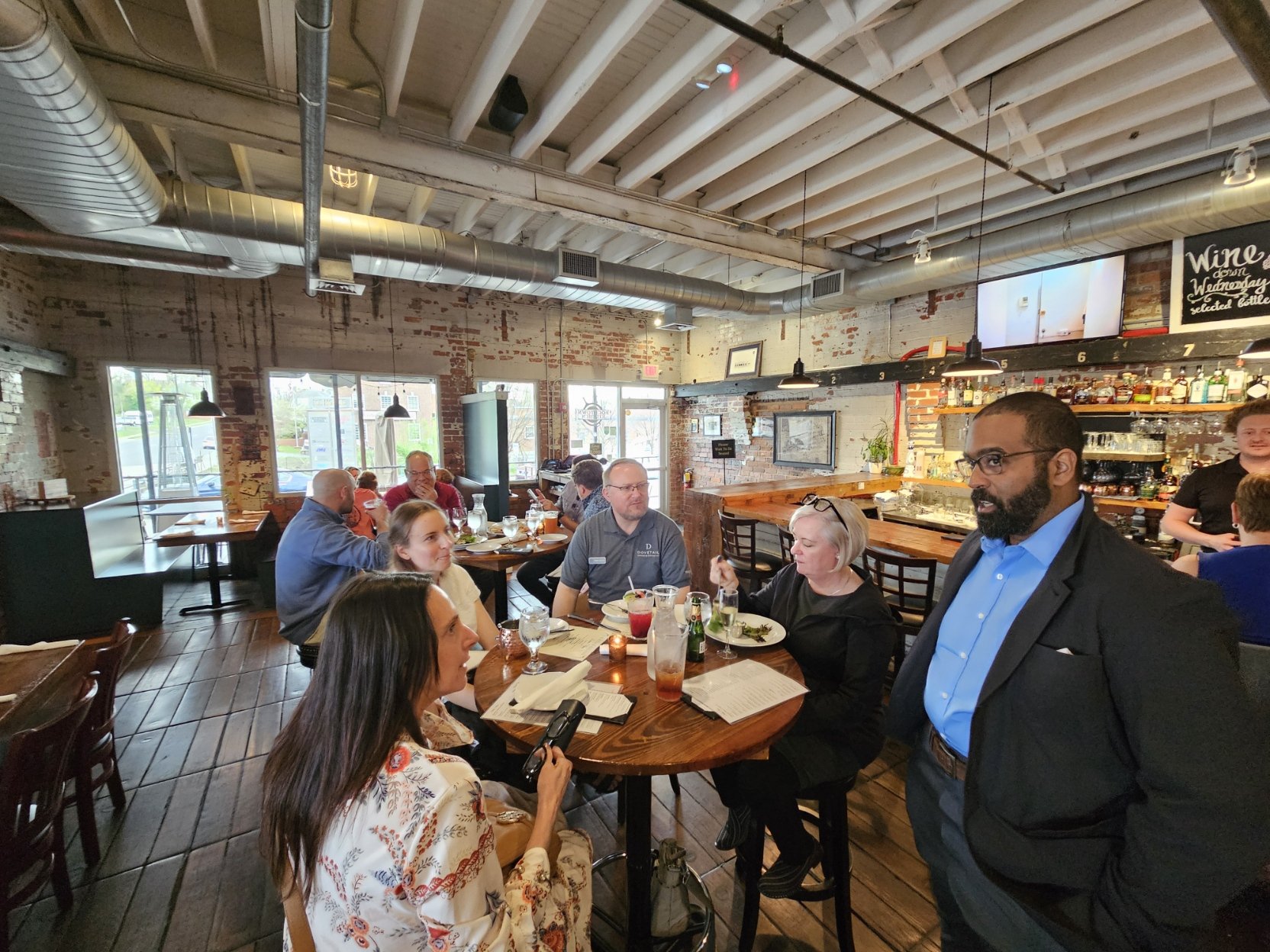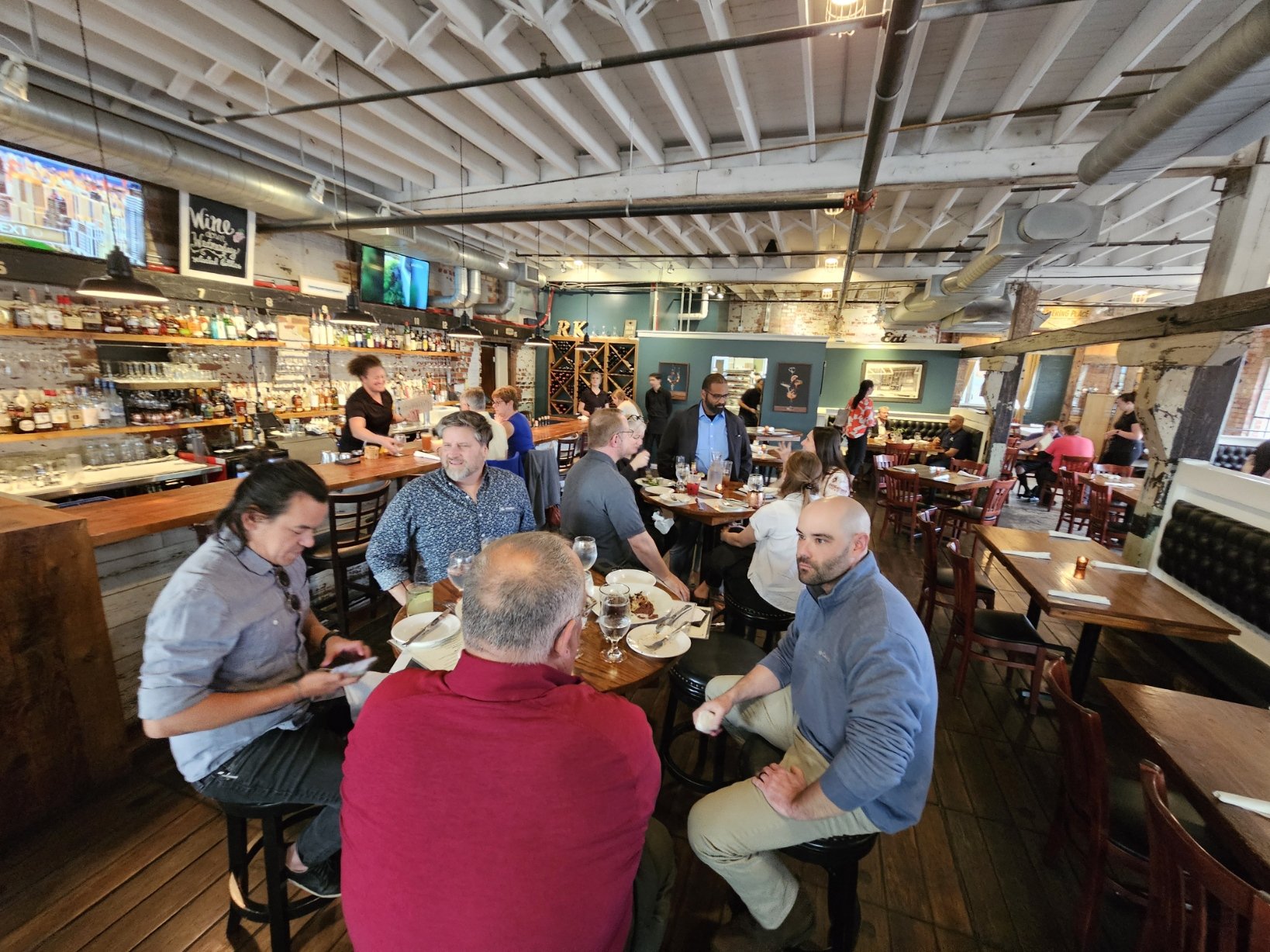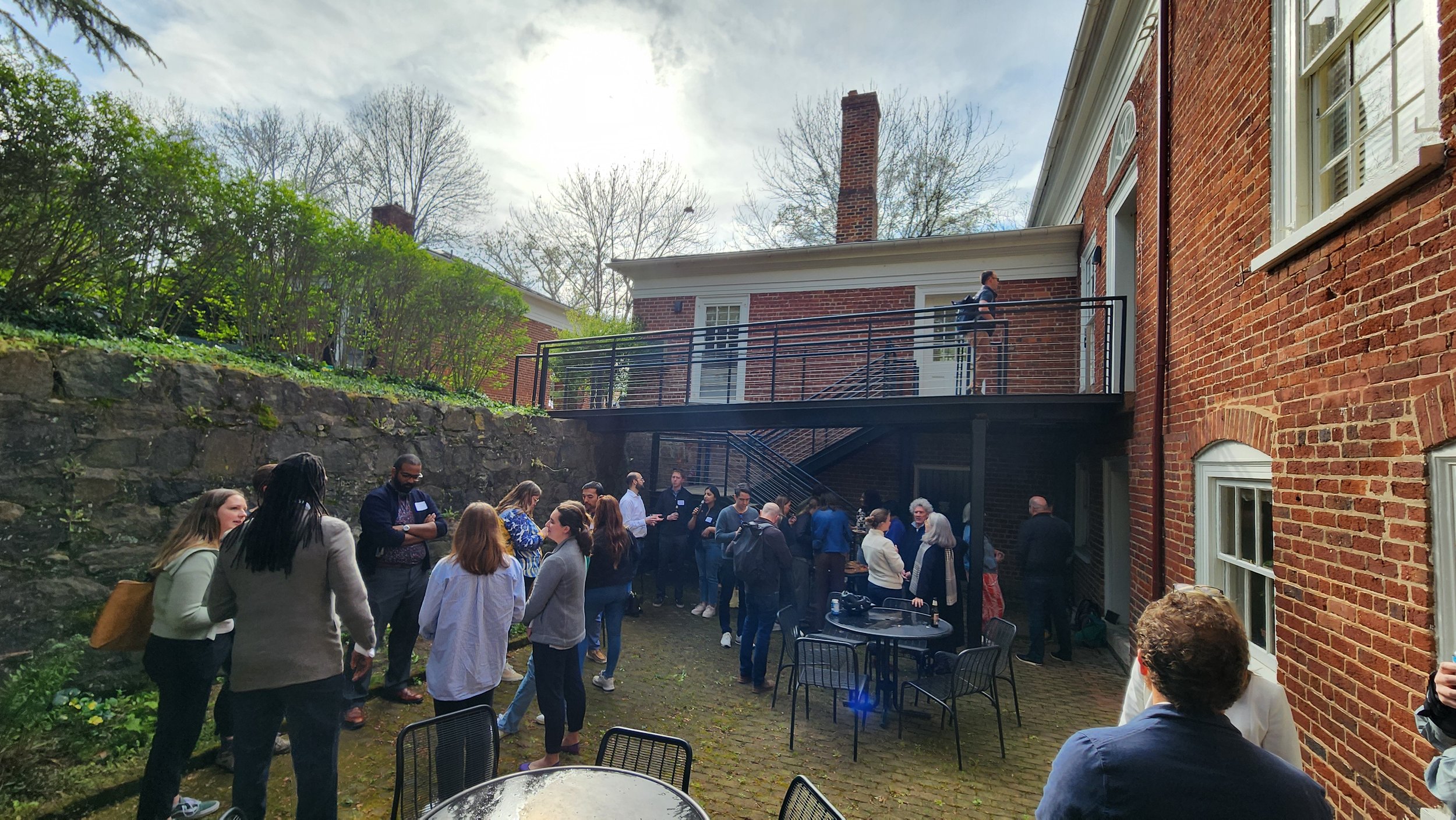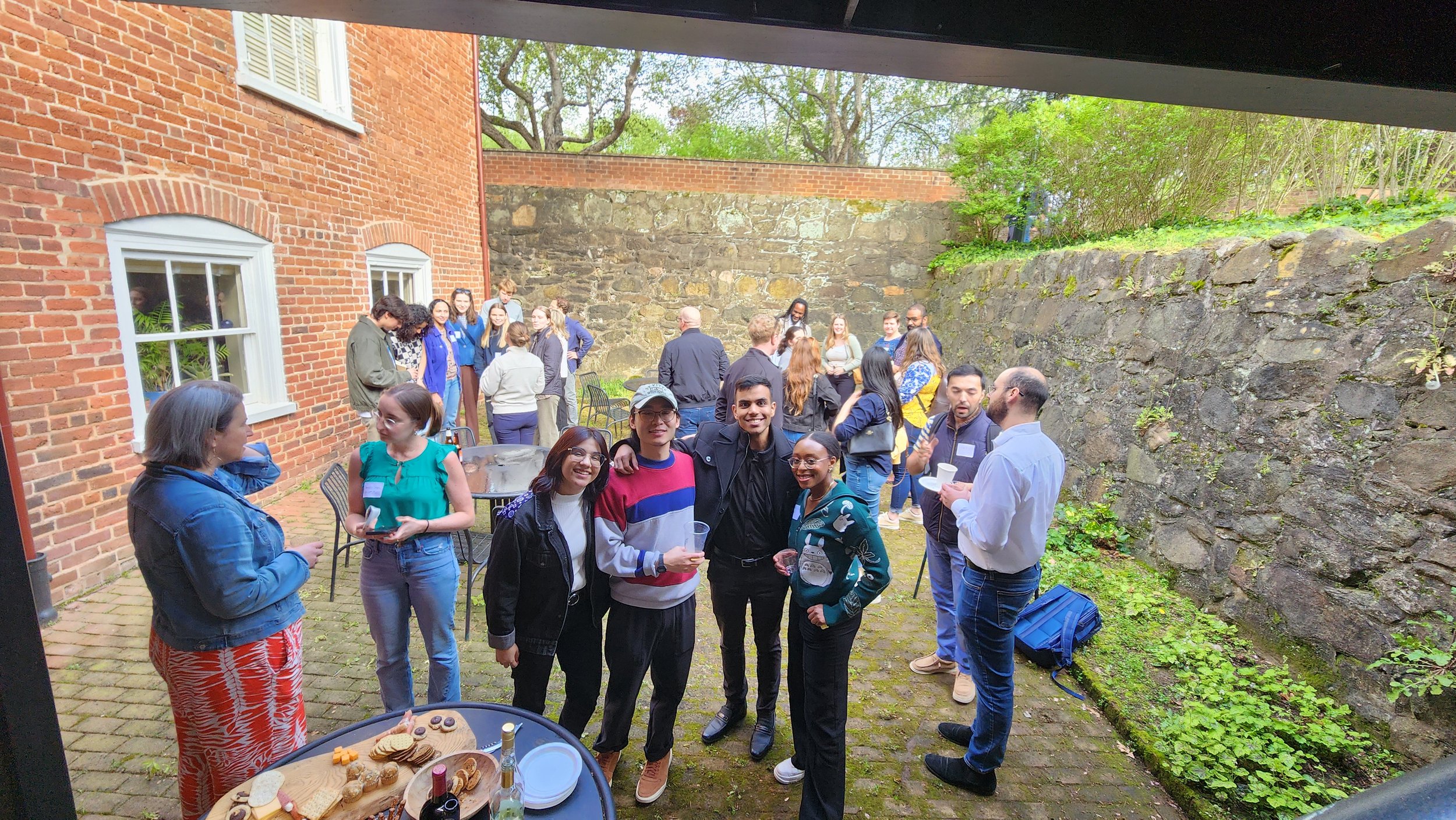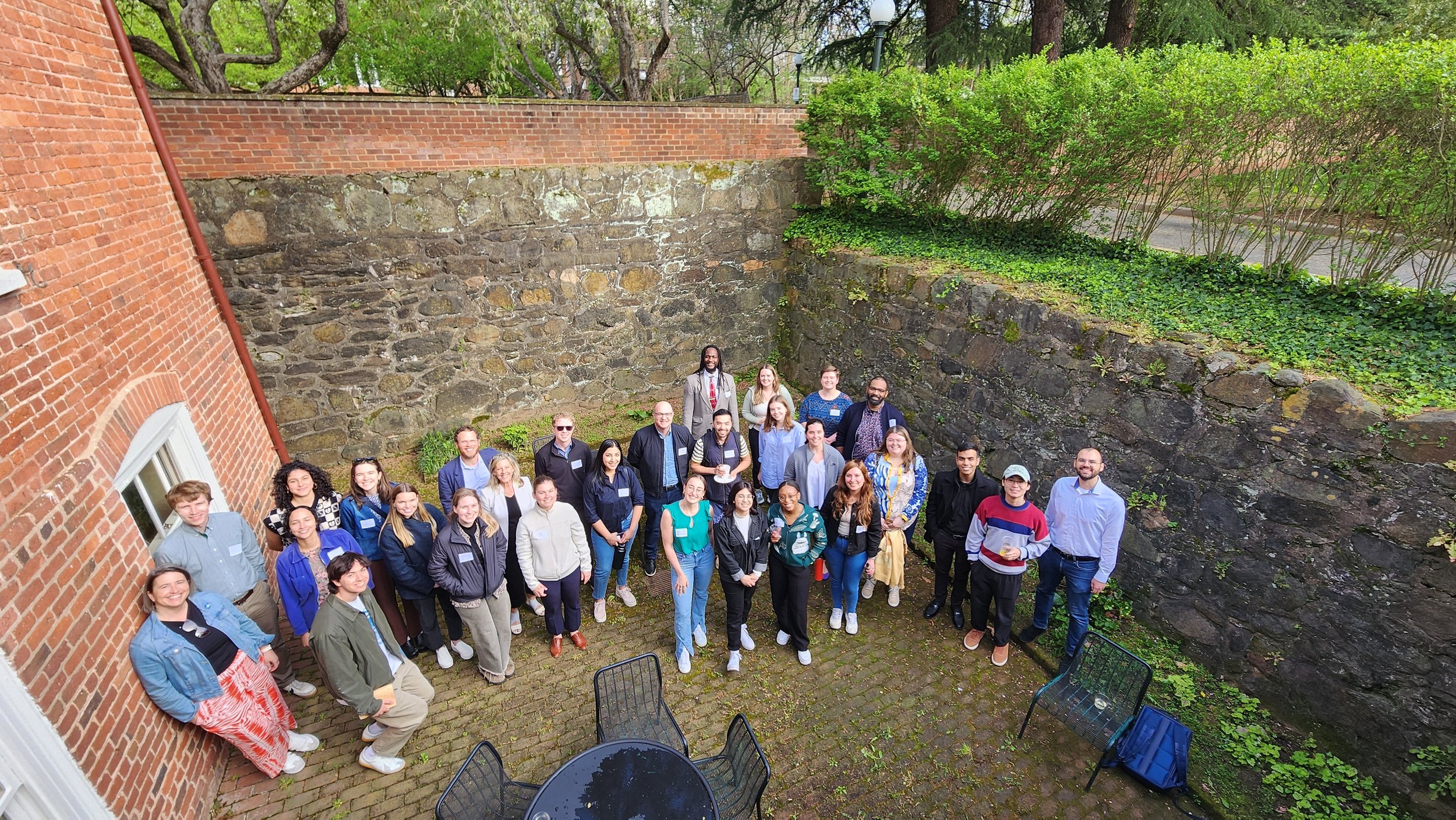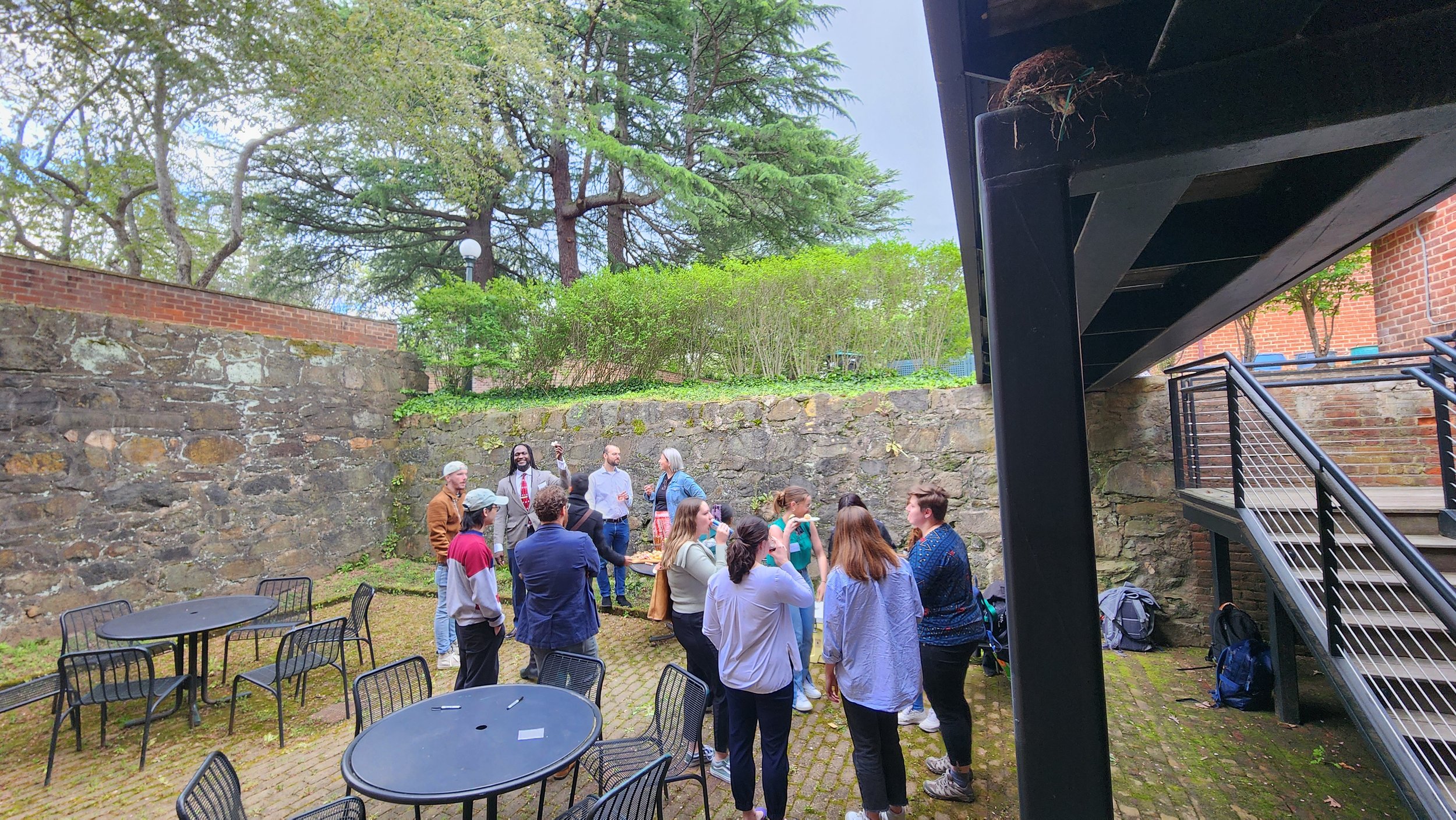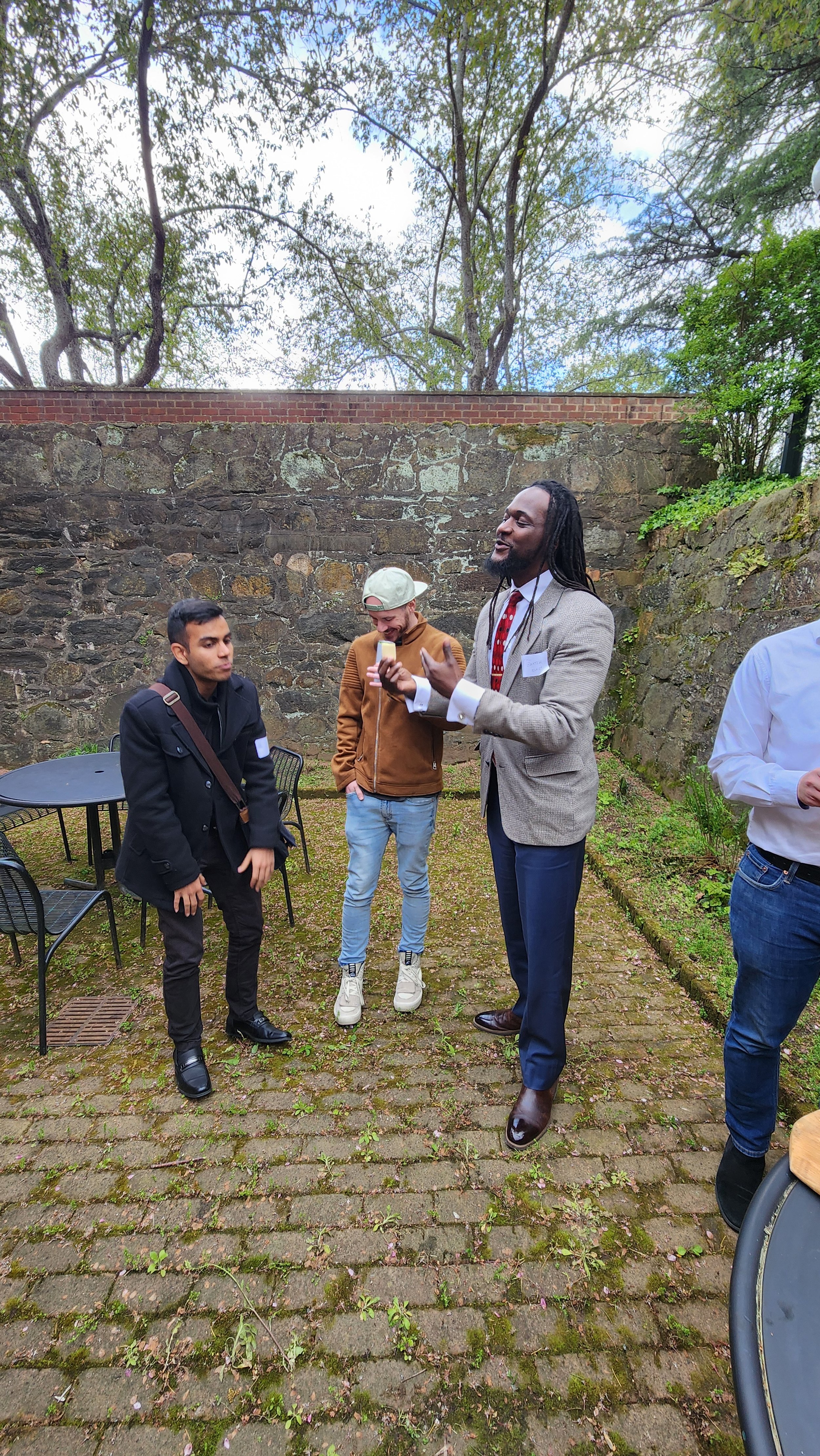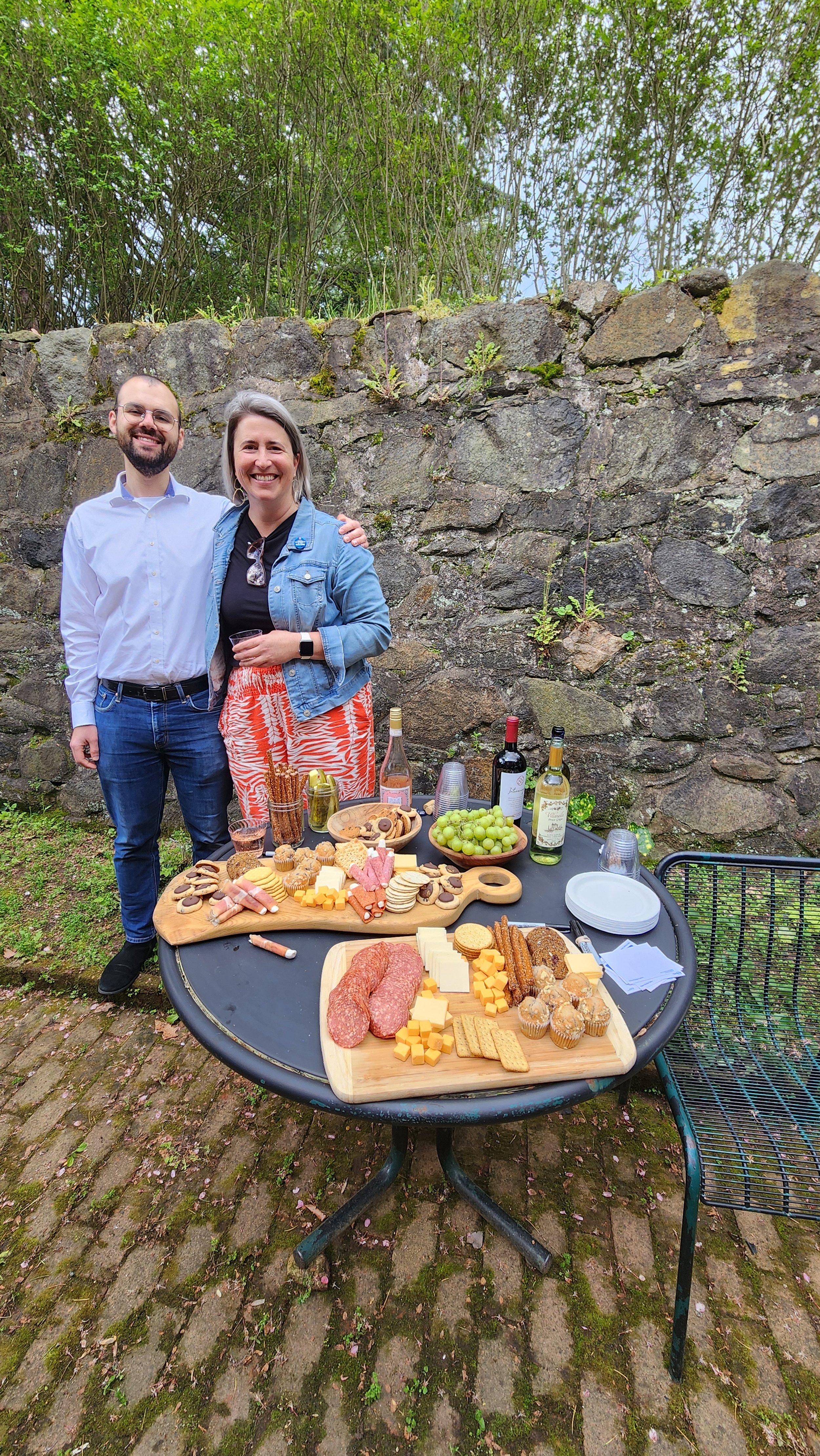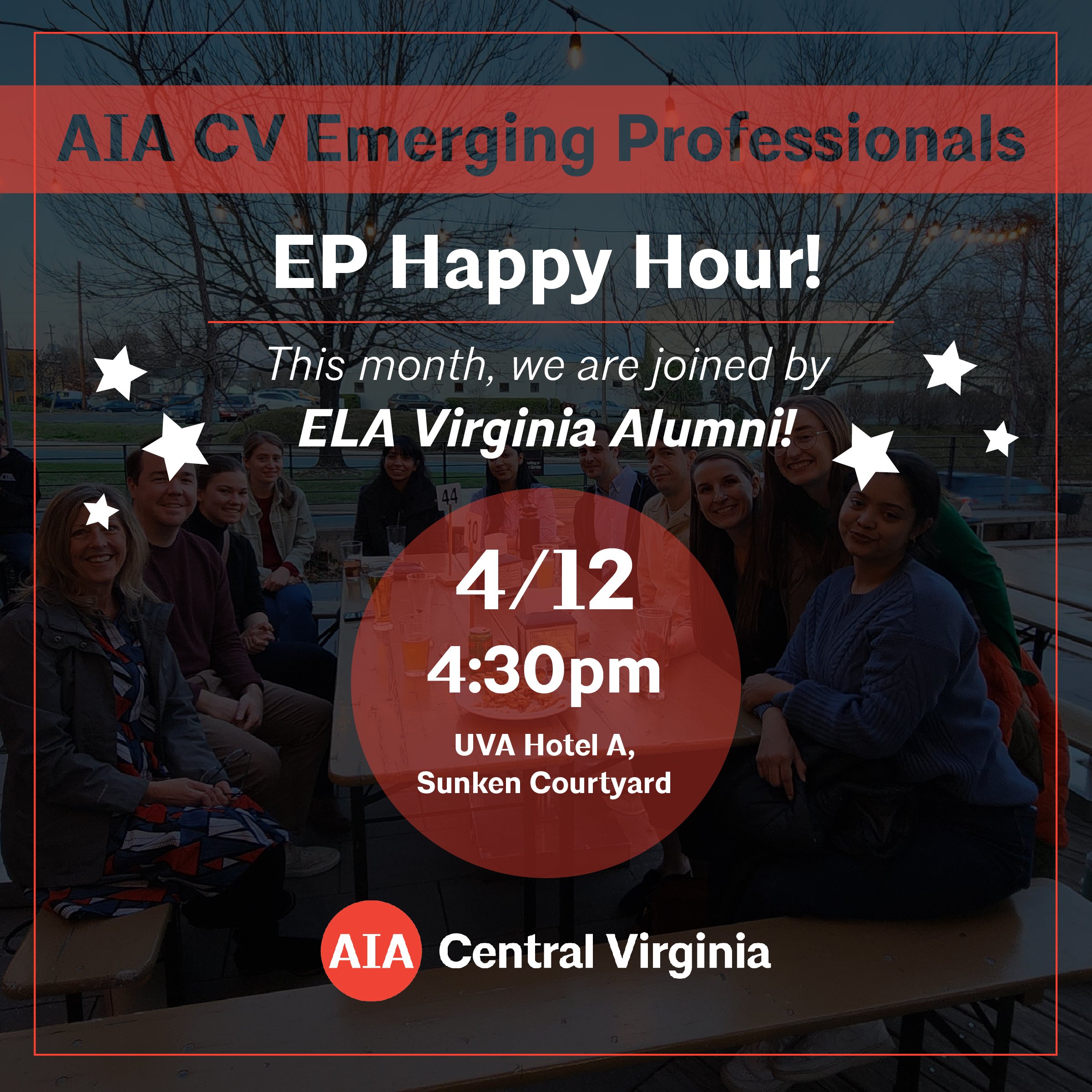AIA Central Virginia members listen to Habitat for Humanity Residential Planning & Design Manager, Amanda Harlow, before touring the inside of the model unit.
Habitat for Humanity graciously hosted AIA Central Virginia in a tour of the Southwood Redevelopment project. Habitat is leading the charge with area developers (Piedmont Housing Alliance, Atlantic Builders, and Southern Development Homes) to bring the value of home ownership to the residents of the Southwood Mobile Home Park.
An ‘Asset-Based Approach’
Our tour started at the Southwood Community Engagement Trailer where Amanda Harlow, Habitat for Humanity Residential Planning & Design Manager; Mich Estrada, Community Engagement Manager; and Kelly Eplee, Director of Donor Relations gave us introductions and the heart-warming backstory.
Habitat purchased the 100-acre site and trailer park in 2007 when the owners could no longer sustain maintenance support for the over 1200-member community. Instead of selling the land to developers who would likely have razed the area, displacing many families in the process, the owners and a small committee of residents turned to Habitat for help. After purchase, Habitat invested $25M to stabilize the site’s sewage system and looked to revitalize the neighborhood with a goal that no one gets displaced.
Habitat set off on an unprecedented project to combine their “come and design your own neighborhood’ style with an ‘asset-based approach’ to the redevelopment by building on the strengths and assets of the community rather than starting redevelopment from the traditional tabula rasa. The focus was to build a model where local families can contribute ‘sweat equity’ and gain financial knowledge to build economic wealth through home ownership. As homes come online with each completed phase, homebuyers attend classes, participate in county and community meetings, volunteer, and participate in one-on-one coaching to improve their economic prowess in preparation to take on new zero-interest mortgages with Habitat’s support. These homes are the first steps of building generational wealth in the long term. In the short term, the new living spaces improved family budget and health with better insulation and new cost-saving heating/cooling systems which can lead to improved school attendance due to less sickness.
A Time to Re-evaluate
Village 1 and 2 were well on their way to completion when the community brought concerns to Habitat’s attention. By January 2024, the Southwood residents had seen how the homes and greenspaces for organized play were developing, but they had concerns that more aspects of their community life were not being reflected in the modular block design. Greenspaces for organized play were great, but there was a need for greenspace for general play, too. Parking was limited to 2 spaces per unit, but nuclear families in Southwood often would have a new young driver with an additional car for commuting to work in support of their family. Furthermore, many residents were part of the skilled trades employment market with construction vehicles and trailers that needed space for parking and security. These are assets to the community, and in an asset-based approach, these needs must be accommodated. Habitat paused and worked with the community to redesign the neighborhood block for additional oversized parking and green space for unstructured play.
A Community With Strong Values
The values of the community and the developers are clear in the vision statement handwritten neatly on the wall of the Community Engagement Trailer in both English and Spanish:
Southwood is a community that is founded on respect for all people and for our neighborhood. We value the safety of everyone, including our physical, social and economic security. We believe in affordability in all aspects of our lives, keeping costs down so we can build economic stability for our families. We show solidarity with one another by helping and supporting each other, and we hope to preserve and grow our solidarity by teaching our children and inviting new neighbors to join us. Family, friends and community are a priority, and we hope to create a sense of belonging where our community can thrive.
These strong values show up in the unit designs like the version we toured designed by Greg Powe Architects. The 1200SF unit was bright and inviting with all the needed ammenities to support family life. Behind the main dwelling, a 400SF Accessory Dwelling Unit sits on top of a garage which is also plumbed for a bathroom. This gives families opportunities to bring in extra rental income, run a business from home, or provide space for friends and families when a place to stay during seasonal work is needed.
It’s also obvious that Habitat is packing as much economic value in the development as they can. The development has a number of market rate home that will continue to increase in value with the rest of the community over time. While listening to Amanda Harlow tell us about the Greg Powe unit, Tiger Solar (An AIA Central Virginia Allied member company) was installing solar panels on some of the units, making sure that the investment in the community’s sustainability future is not overlooked.
And Habitat and the Southwood neighborhood is just getting started! As each new section is moved into, another section of the old mobile home park opens up for a new revision. On August 8, Habitat and community members will start the conversation about Villages 4 and 5 on the north side of Bitternut Street. AIA Central Virginia will continue to follow the progress, and we look forward to all that is to come!
Donate to Habitat https://cvillehabitat.app.neoncrm.com/forms/charlottesville















